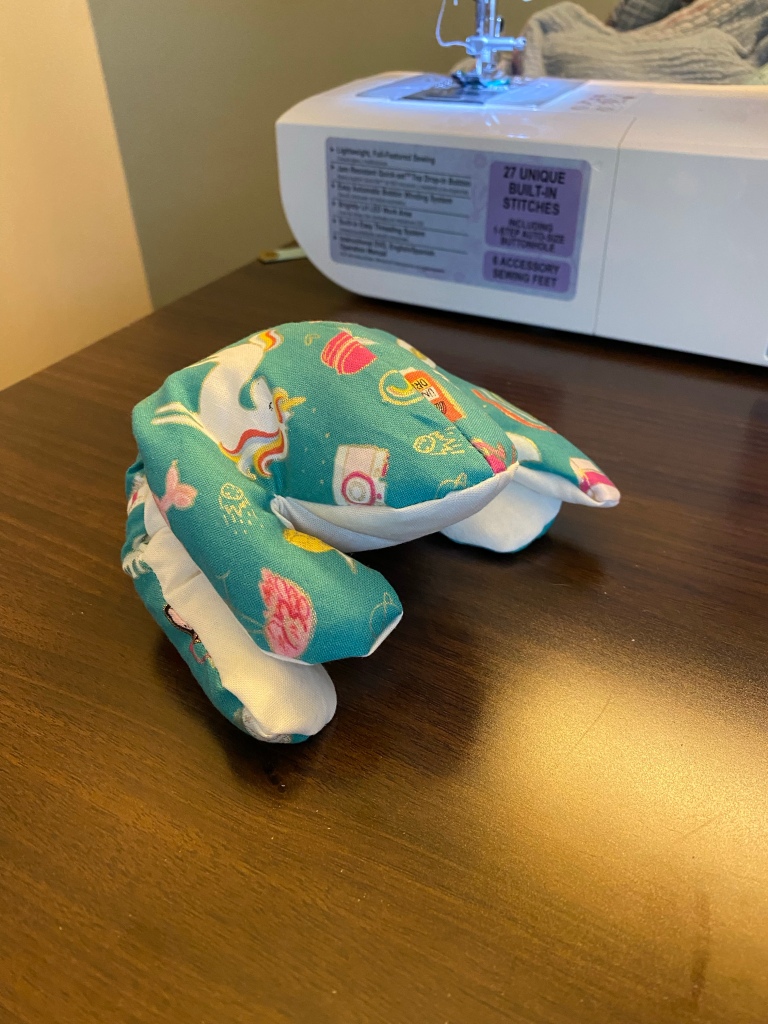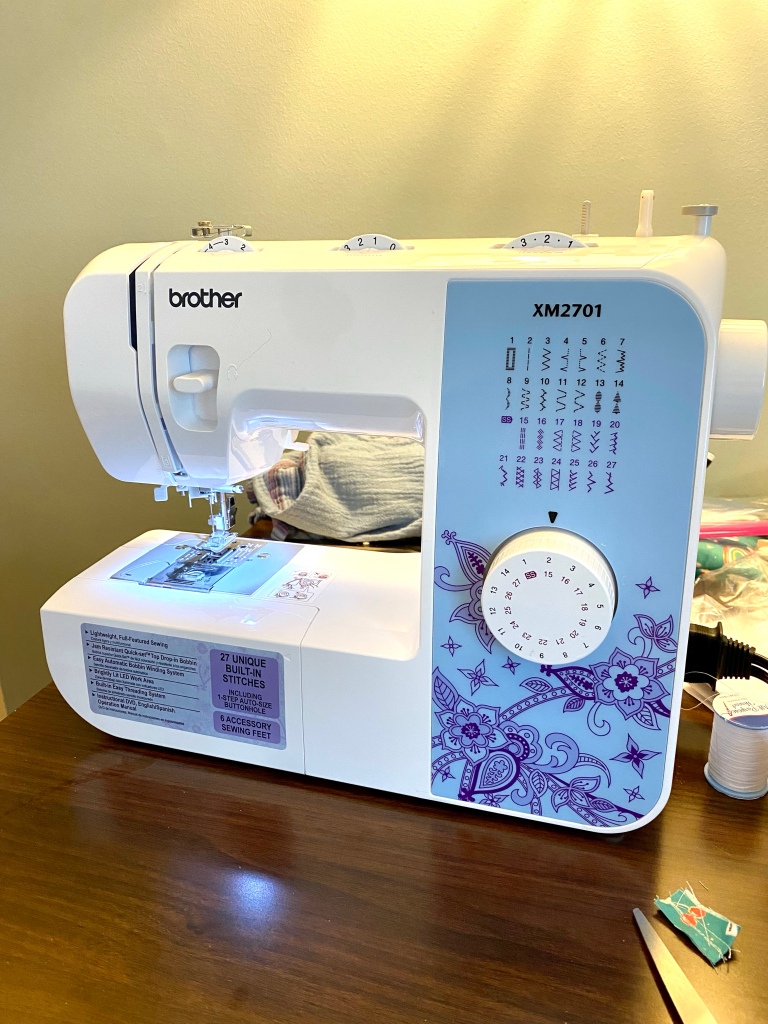I found the “just right” size of bean bag frog from my Jr. High years. McCalls had come out with a pattern in the early 70s for a bean bag frog. The mother of a friend made several of them for the friend to give away. Somehow I came up with the name Uncle Dudley for mine and it stuck. I played with Uncle Dudley for a long time but I don’t know what happened to it.
Pinterest showed me the frog and I searched for just the right pattern. It couldn’t be a different version, it had to be the original Uncle Dudley. While I couldn’t find the original paper pattern for sale, I did find someone who specializes in recreating vintage patterns, and I jumped on it. It came with several sizes of patterns to print.
The first one was too small. It was small enough to make from a man’s red tie, but I wanted the right size. Using grid paper, I enlarged the squares to double the size and made it in purple, but that was far too large. I didn’t even finish stuffing that one. I went to the printer again and found a medium size and it’s exactly right.
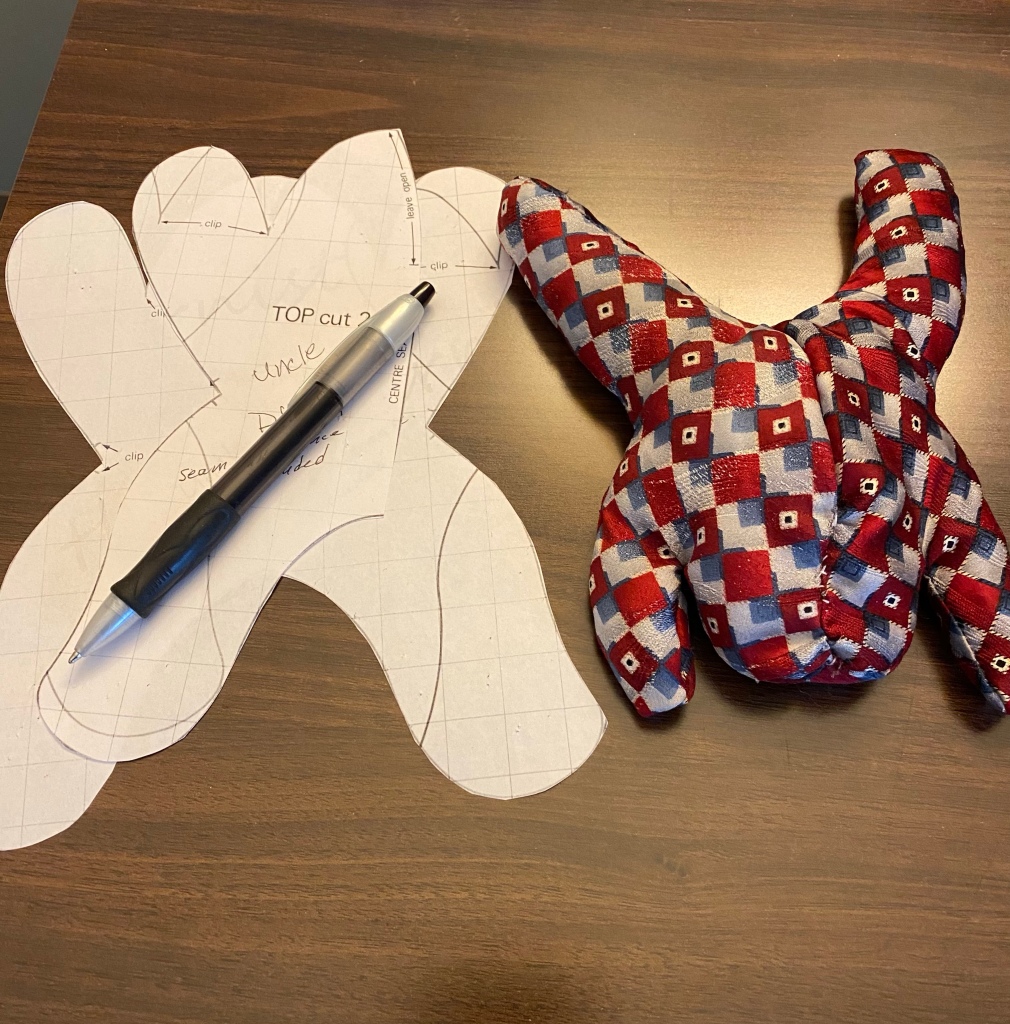
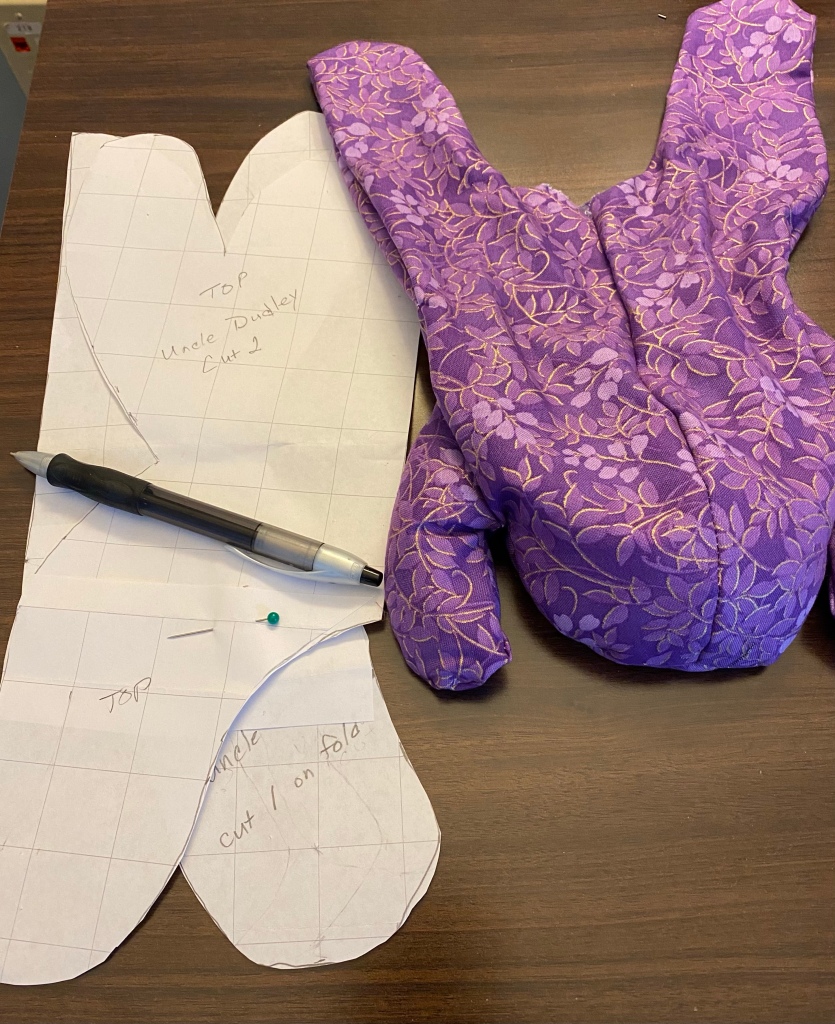
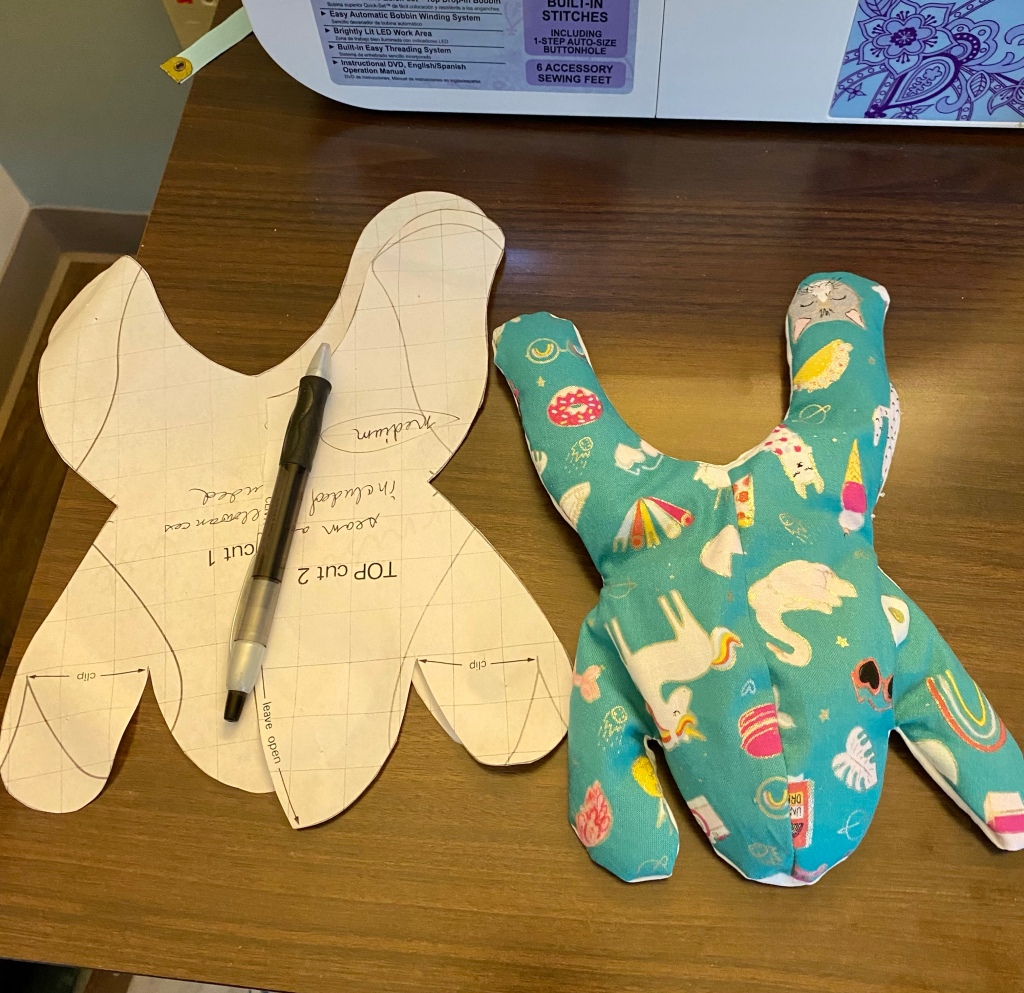
The final version is 9 inches from toe to nose. I changed where the opening is for turning and stuffing, because I wanted my hand-stitching more hidden than where the pattern said, although it would have been easier to stuff. If you try bean bag animals, be sure not to stuff it completely full so you can pose it a bit. What I had on hand was rice, but I think bird seed would have a better feel and flow to it.
Textural fabrics would really be great for this pattern. I found some embroidered denim at JoAnn Fabrics that spoke 70s to me, but the scale was far too large. Remember all the chambray shirts and denim jeans that were hand embroidered in bright colors back then? Corduroy, satin, microsuede, flannel, there are so many fabrics that would be fun to try.
I hope you enjoyed my hop down memory lane.
Here’s a look at the sewing machine my granddaughter let me borrow. It’s pretty basic, but a great entry model for her and a great interim model for me.

